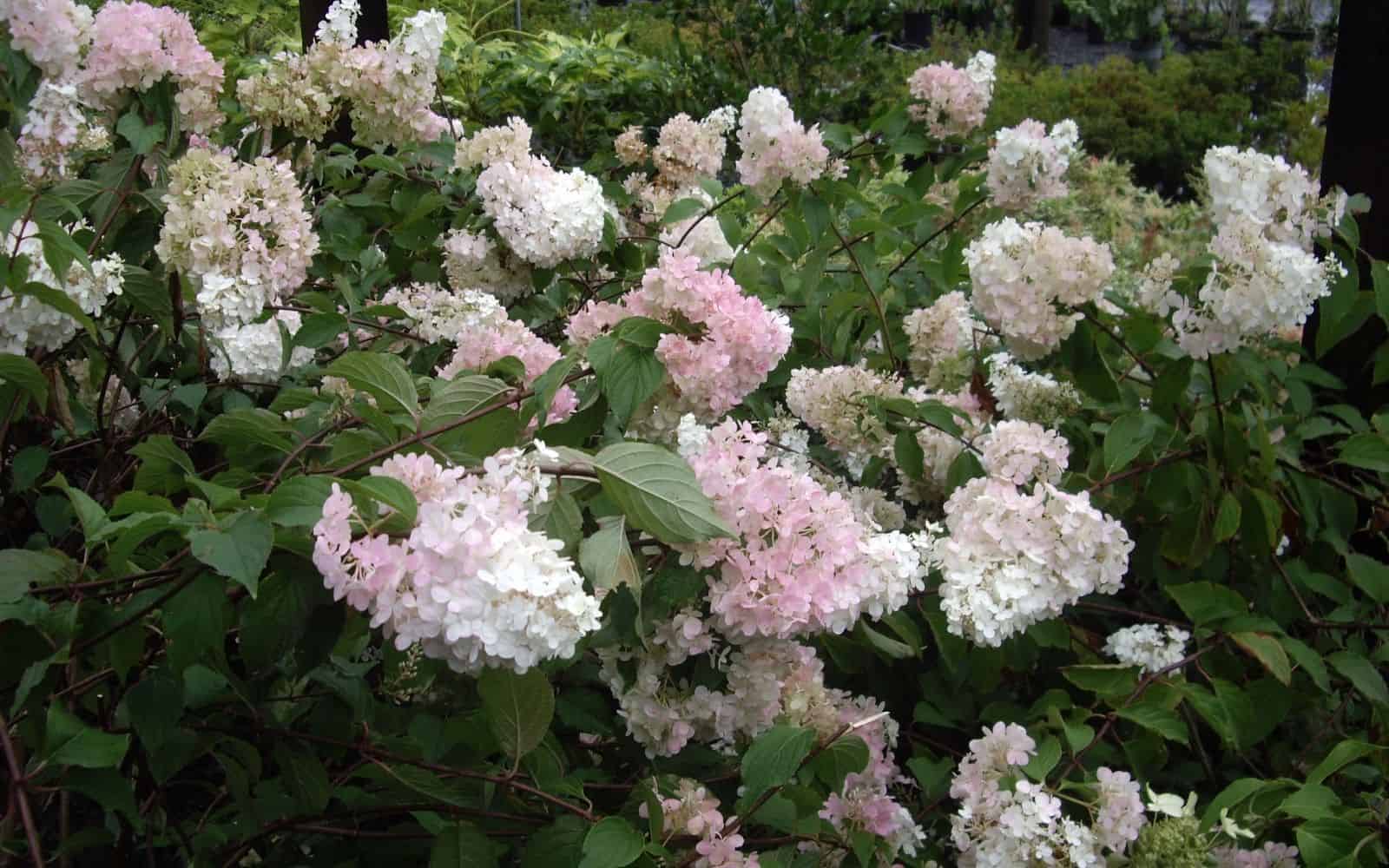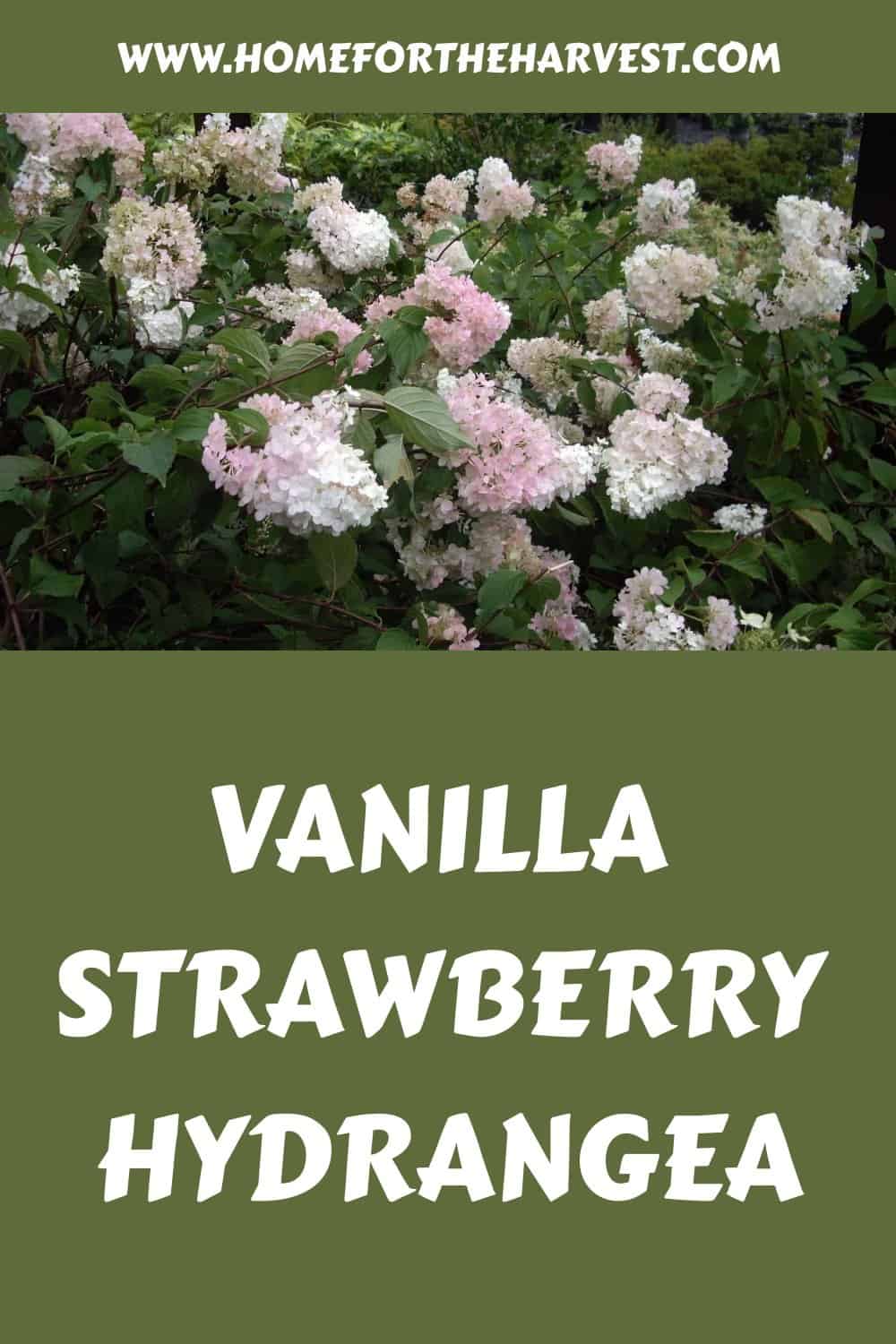The Vanilla Strawberry hydrangea (Hydrangea paniculata) is a flowering shrub known for its stunning pink and white flowers and low maintenance characteristics. The plant flourishes for many years in Zones 3-9, tending to grow best in planting locations with partial sunshine. Vanilla Strawberry hydrangea is one of the coldest hardy types of pink flowering hydrangeas available.
Vanilla Strawberry hydrangea basics
The Vanilla Strawberry hydrangea, by First Editions, is a panicle type of Hydrangea. This French hybrid boasts beautiful pink and white blooms. This hydrangea plant is one of the easiest hydrangeas to learn how to grow.
The flowers start as creamy white at the start of their season and slowly turn into a pink or deep burgundy as the summer progresses. The growing conditions may also play a role in the color of the flower, which can range from white to deep red. Vanilla Strawberry hydrangeas are sometimes referred to as Vanille Fraise hydrangea plants.
Vanilla Strawberry hydrangeas bloom in the middle of summertime. The flowers are a softer true pink than some other pink panicle hydrangeas like Quick Fire Hydrangea and Pinky Winky Hydrangea, which tend to be more of a red-pink.
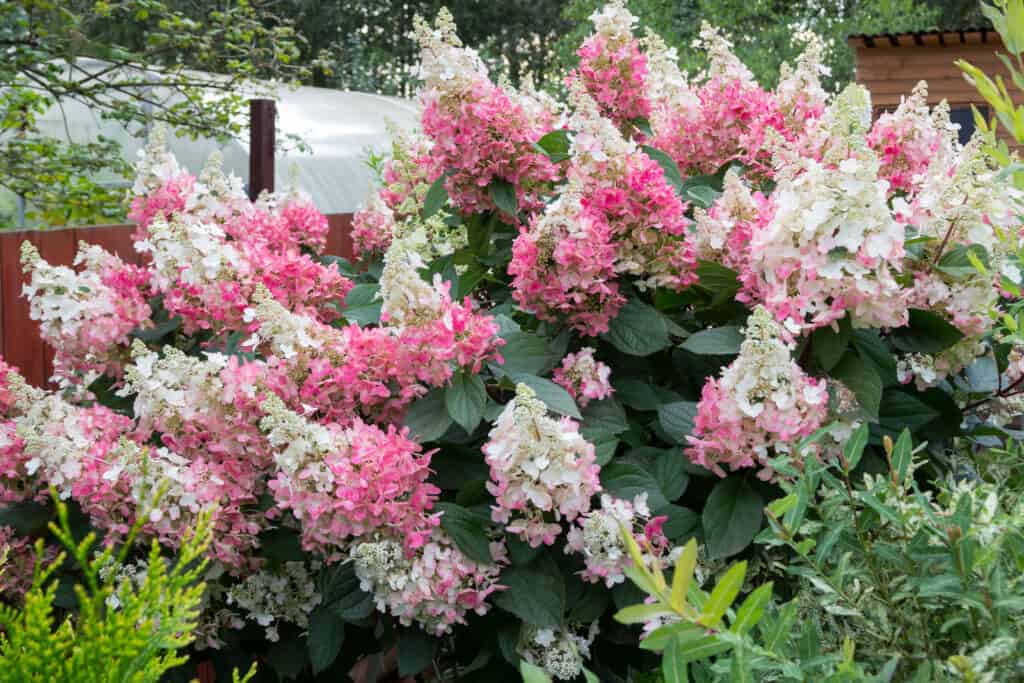
This type of hydrangea is known for its cone shape at the head of the flower. This is an iconic feature of the panicle hydrangea because other varieties will grow in a dome shape. Another distinct characteristic of this plant is its height. The plant can grow up to 6-7 feet tall, and the shrubbery can spread out to 4-5 feet. If you are planting Vanilla Strawberry hydrangeas, make enough room since they grow several branches, and each plant produces multiple flowers. You won’t want to stifle this beauty!
The Vanilla Strawberry hydrangea may sound like a delicious plant from its name, but be sure not to eat it because it contains a poisonous chemical called cyanogenic glycoside, which can cause negative health effects. This type of flower is suitable for arrangements and decorations only.
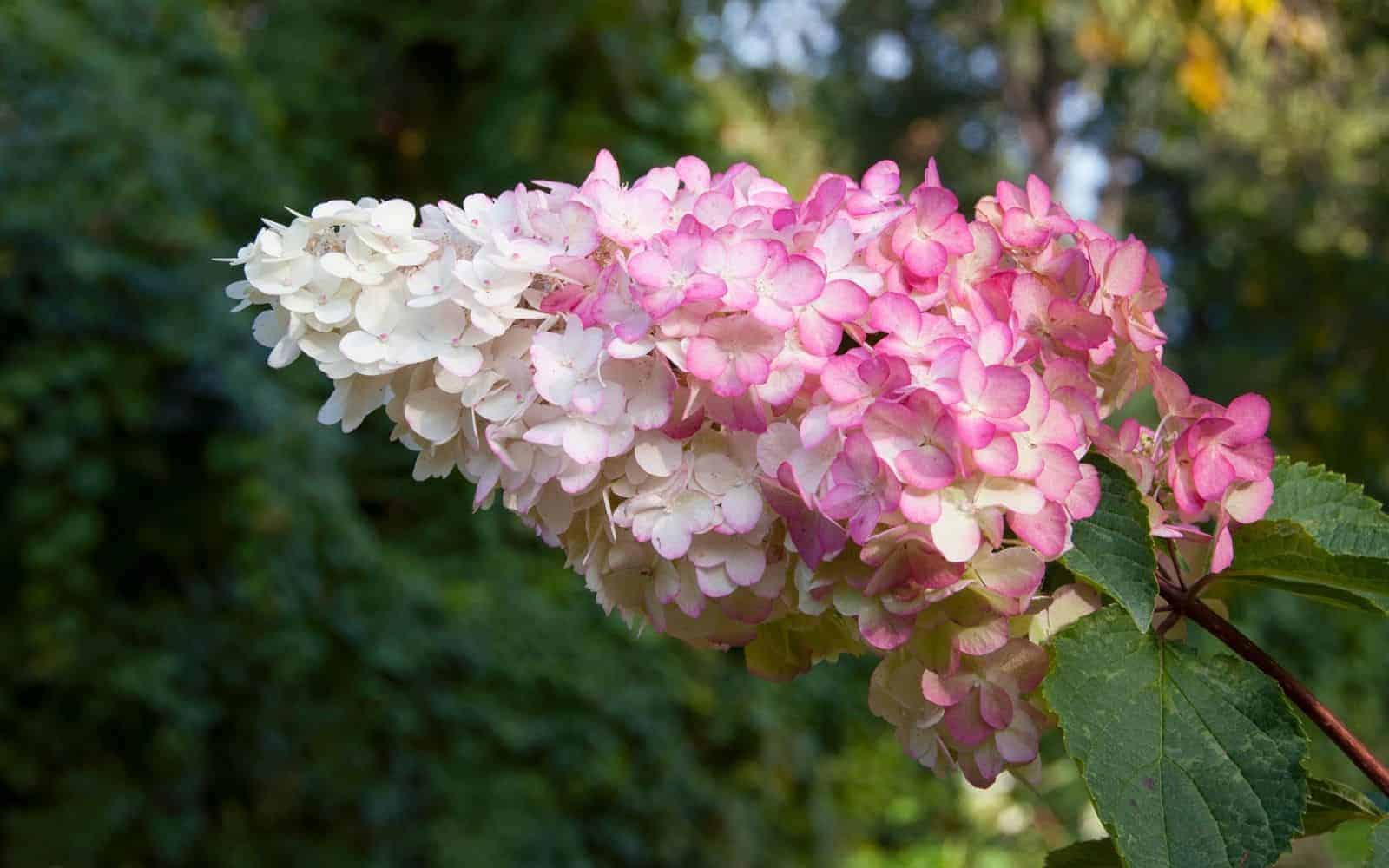
Buying Vanilla Strawberry hydrangea plants
The Vanilla Strawberry™ hydrangea is a First Editions® panicle hydrangea cultivar. Most garden centers that carry First Editions will either stock this plant or can order it for you. You can also buy it online.
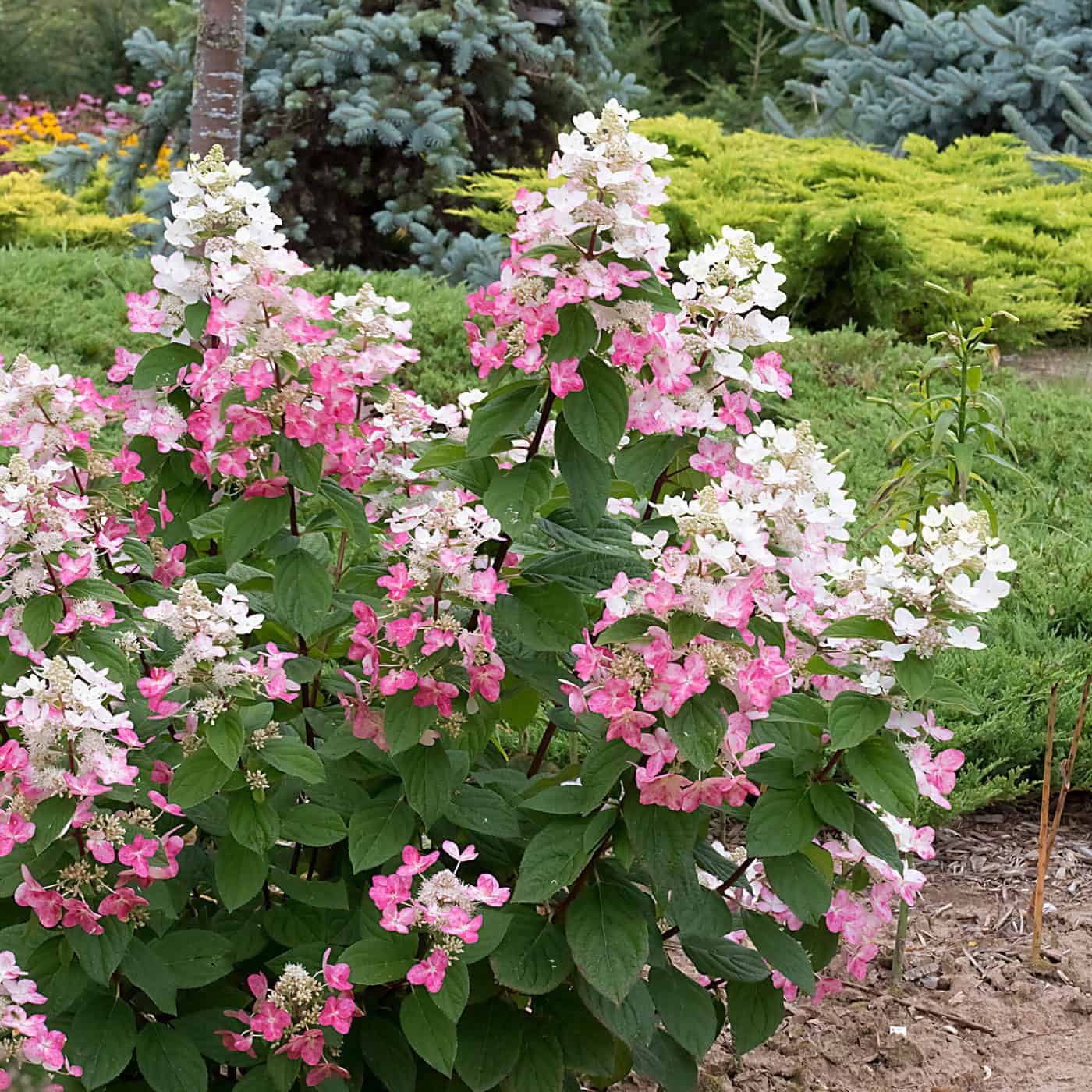
Planting location for Vanilla Strawberry hydrangeas
Vanilla Strawberry hydrangeas can be grown in Zones 3-9. They also grow best in areas that have a lot of sunshine. This plant needs partial to full sun, depending on the climate in which you live. If you live in an area with a harsh summer climate, it is best to find a location where the hydrangeas will get shade during the mid-afternoon sun. The flowers should flourish if the plant is exposed to at least morning to late afternoon sun.
“Vanille Fraise will grow best in moist, fairly fertile soil in light shade or partial sunshine, but its ability to thrive even in a shaded site makes it a useful garden plant. In fact, it is very hardy, surviving in temperatures as low as -4°F and, even if the stems are damaged by frost, the plant will still produce flowers on the new season’s growth. In warmer regions it is best planted where it will receive shade in the afternoon, if not longer, and don’t let it dry out.”
Hydrangeas: Beautiful Varieties for Home and Garden, by Naomi Slade
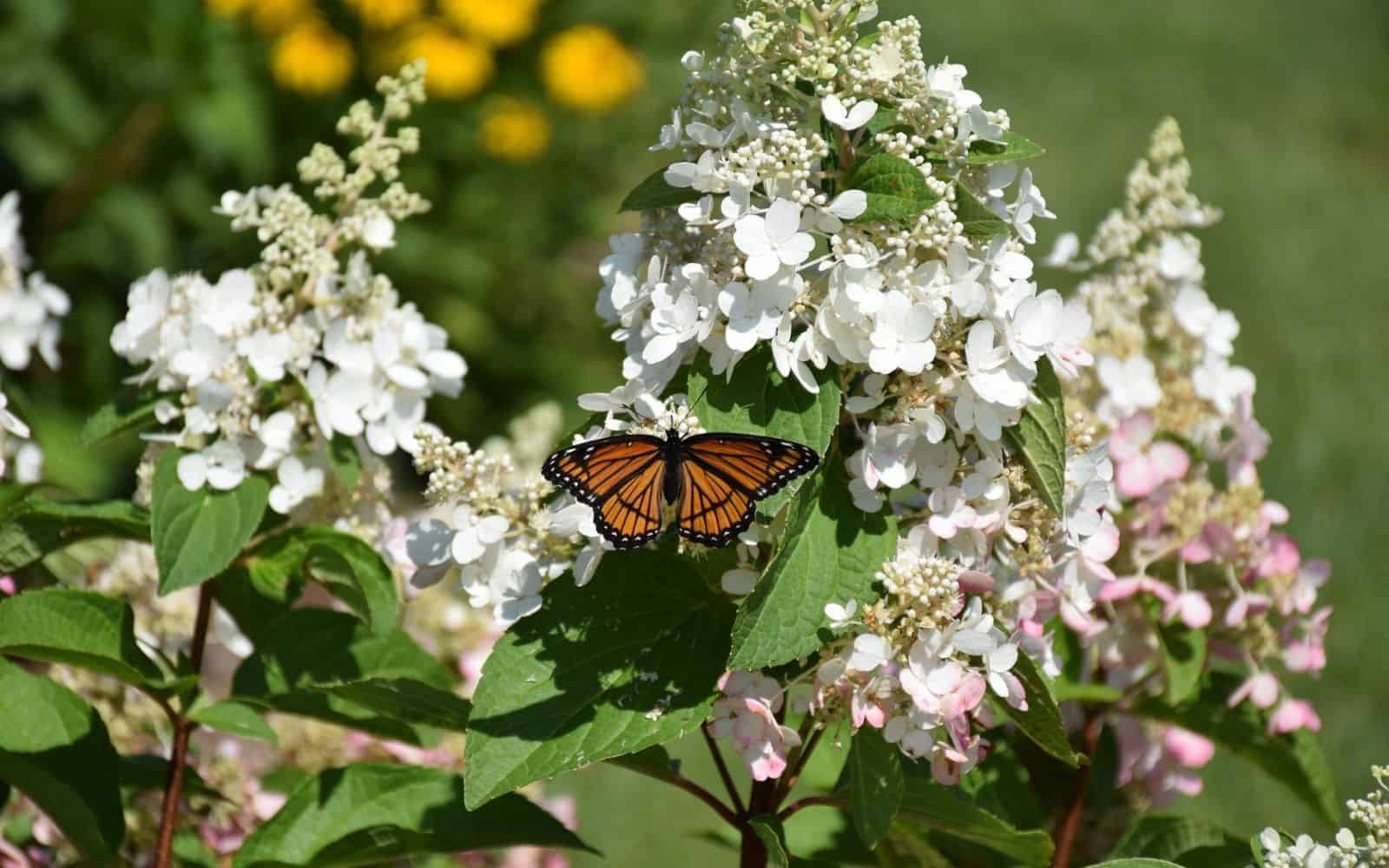
How to plant Vanilla Strawberry hydrangeas
The Vanilla Strawberry Hydrangea is pretty easy to plant and care for. A good tip when planting this type of flower is to make sure that you give the plant enough water in addition to well-drained soil. If you are planting a Vanilla Strawberry Hydrangea that has already been started, make sure that the roots are not dry. If they are, make sure to soak the roots with water before putting the plant into the soil.
Where to plant Vanilla Strawberry hydrangea
When you are locating the perfect spot before you start growing Vanilla Strawberry Hydrangeas, look for a location that has partial or full sun. Panicle hydrangeas need morning and late afternoon sun, the mid-day sun can be too intense for the flowers if you live in a climate with harsh summers. However, this flower variety does well with the south-facing sun in comparison to other plants. If you are worried that the sunlight is too strong for the flowers, you can grow the hydrangeas in a location with partial shade where they will be protected from the mid-afternoon sun.
When planting a Vanilla Strawberry Hydrangea, make sure that the soil is full of nutrients. If the soil that you are using is poor, you can add natural soil or a starter fertilizer to provide the proper nutrients. Mulch is also a great option for the soil because it retains water for a longer period of time.
When to plant Vanilla Strawberry hydrangeas
The seasons that are best for planting the Vanilla Strawberry Hydrangea include the late fall or early spring. This can totally depend on the location of the flower. Hydrangeas shouldn’t be exposed to extreme temperatures, like cold winters or hot summers. If exposed to cooler temperatures in the nighttime, the Vanilla Strawberry Hydrangeas are more likely to become a dark burgundy color rather than its iconic cream and pink color.
The one downside to planting a Vanilla Strawberry Hydrangea is how long it takes for the flowers to start blooming. It takes about a year or two before the beautiful pink and white flowers begin to show, so make sure that you keep this in mind before you start planting this type of hydrangea.
How to plant Vanilla Strawberry hydrangeas
Once the location is chosen, planting a Vanilla Strawberry Hydrangea is simple. Dig a planting hole that is about twice as wide as the planter but no deeper than the soil in the pot. Remove the hydrangea’s root ball from the nursery planter pot. Loosen up any thick roots wrapped around the root ball’s outside. Place the root ball in the planting hole and check to make sure the base of the plant (where the stems meet the roots) is at the same level as the soil surrounding the hole.
Backfill the hole carefully with the soil that came out of the soil. Water the plant very deeply after planting. Check to ensure that the water drains into the soil well and not ponds on top of the surface.
Ensure you water the plant often enough so it doesn’t dry out during hot seasons. Watering about once a week should be perfect for the Vanilla Strawberry Hydrangea, so it’s a pretty low-stress plant.
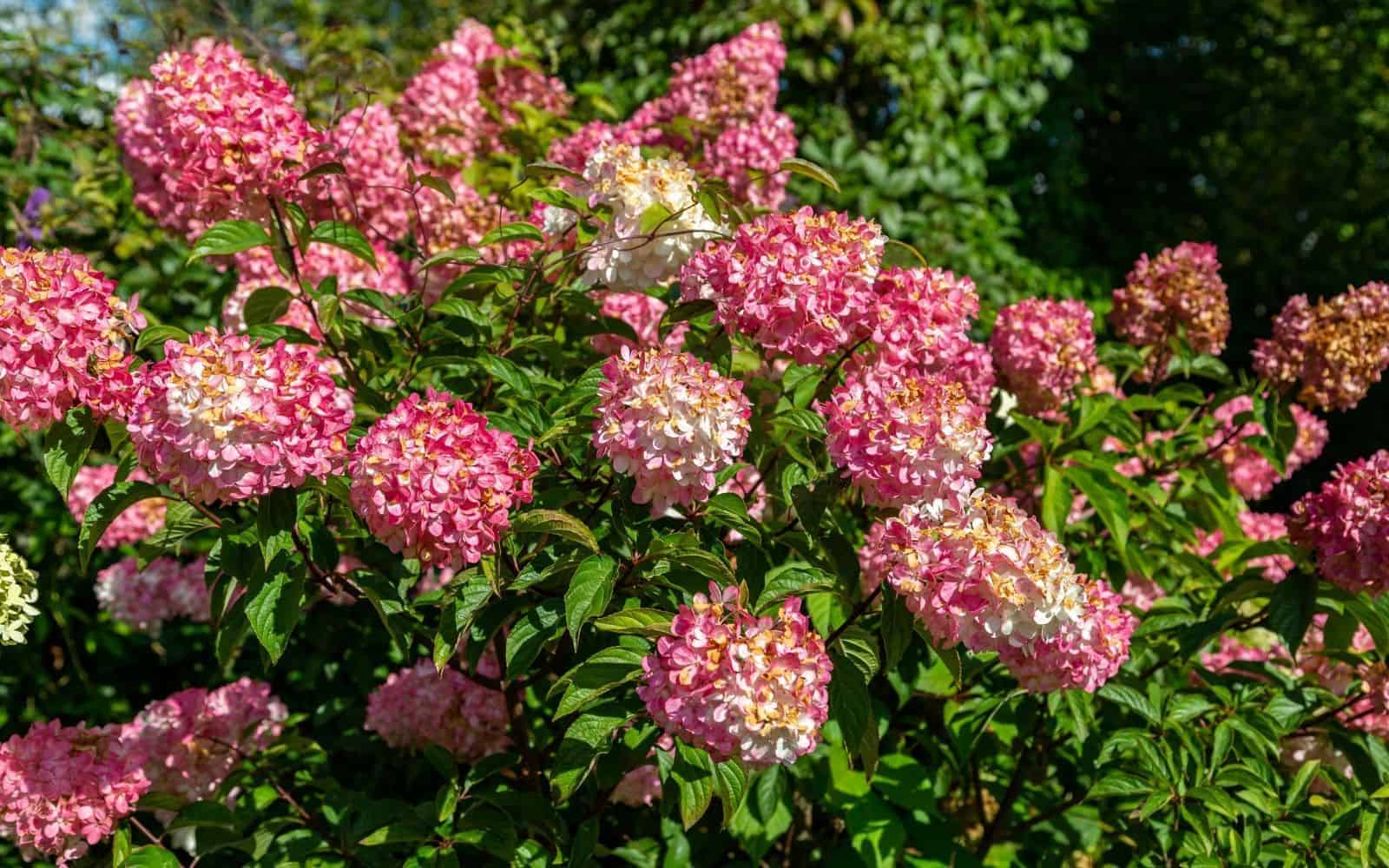
Fertilizer for Vanilla Strawberry hydrangea
Vanilla Strawberry Hydrangeas are generally fed in the early spring and sometimes in mid-summer. Different fertilizer products have different guidelines for how much and how often to apply the fertilizer to the soil around the plant. A garden soil test can help you properly choose your hydrangea fertilizer.
Pruning Vanilla Strawberry hydrangeas
Pruning Vanilla Strawberry hydrangea is simple but can become important. This practice keeps the plant sturdy and disease-free and controls the shape and size of the large plant. Prune these hydrangeas in the early spring.
Start your pruning by removing any branches that are dead, damaged, diseased, or dying. Remove these branches right back to the base of the plant. Then move on to remove any branches that are crossing and rubbing along other branches, especially if they are not growing outwards from the center of the plant.
Now it’s time to remove the oldest stems and deadhead overwintered flowers. Take your shears and start pruning the branches at a 45-degree angle. Step back and ensure that you keep the shrub in a rounded shape.
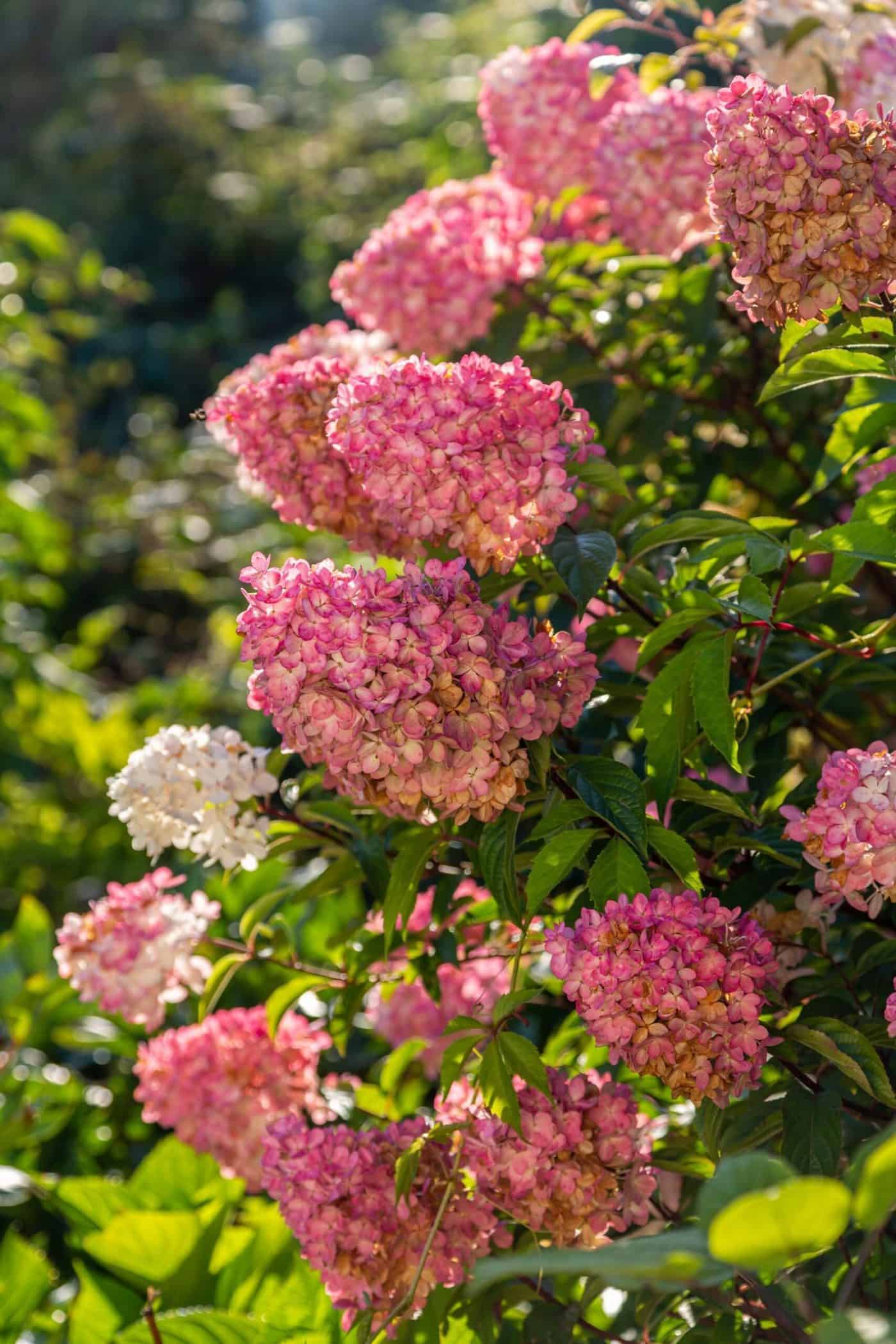
Common pests that attack Vanilla Strawberry hydrangea
Vanilla Strawberry Hydrangeas can be attractive to pests, including aphids, spider mites, slugs, and Japanese beetles. Fortunately, recognizing them is fairly straightforward. These pests are all possible to conquer if you have the right tools.
One is to wash the leaves and stems down with soapy water. Another is to treat the whole plant with an organic insecticide. You usually need to use them a few times (follow application instructions on the product bottle).
Diseases affecting Vanilla Strawberry hydrangea plants
Vanilla Strawberry hydrangeas are less prone to disease than many other varieties. That said, they are somewhat susceptible to powdery mildew, bud blight, leaf spot, and bacterial wilt. Most of these are caused or exacerbated by overwatering, too much shade, or too little ventilation within your plant.
One way to treat disease is to decrease watering and increase air circulation around the plant. Alternatively, transplant it to an area with better soil drainage or more air movement. And there are always organic fungicides to try.


